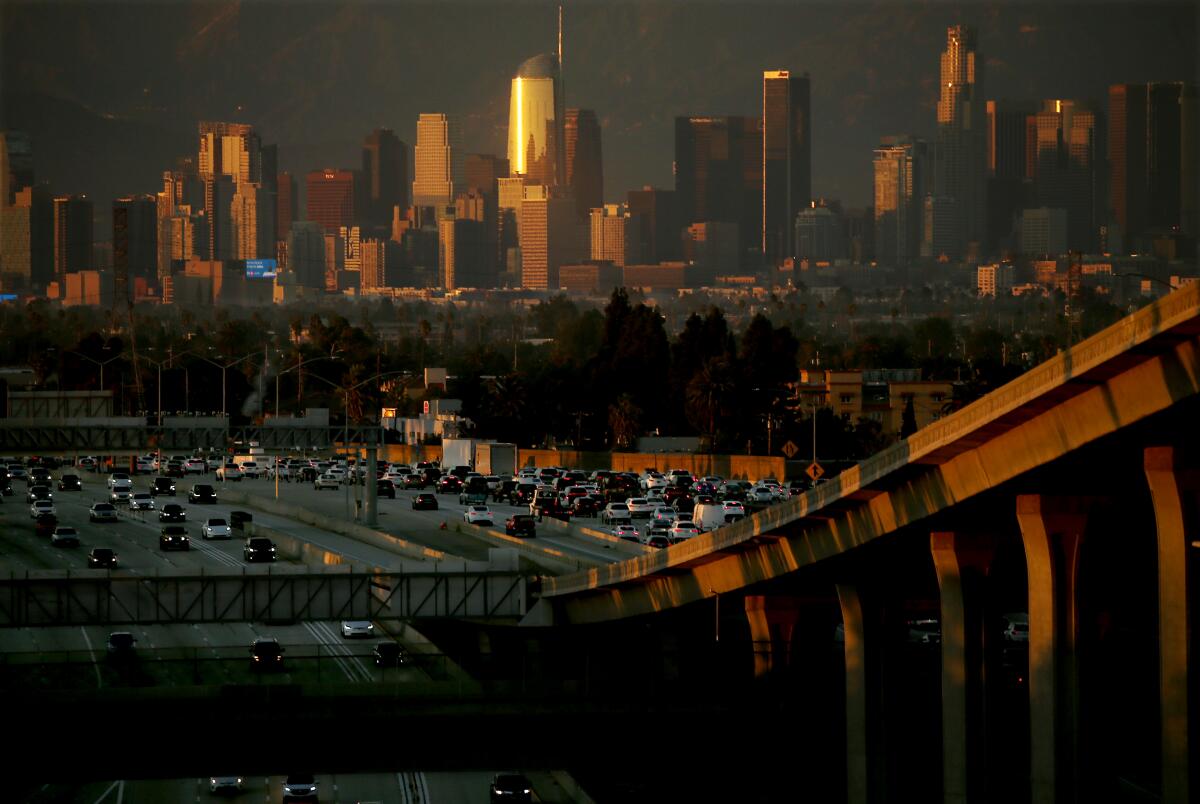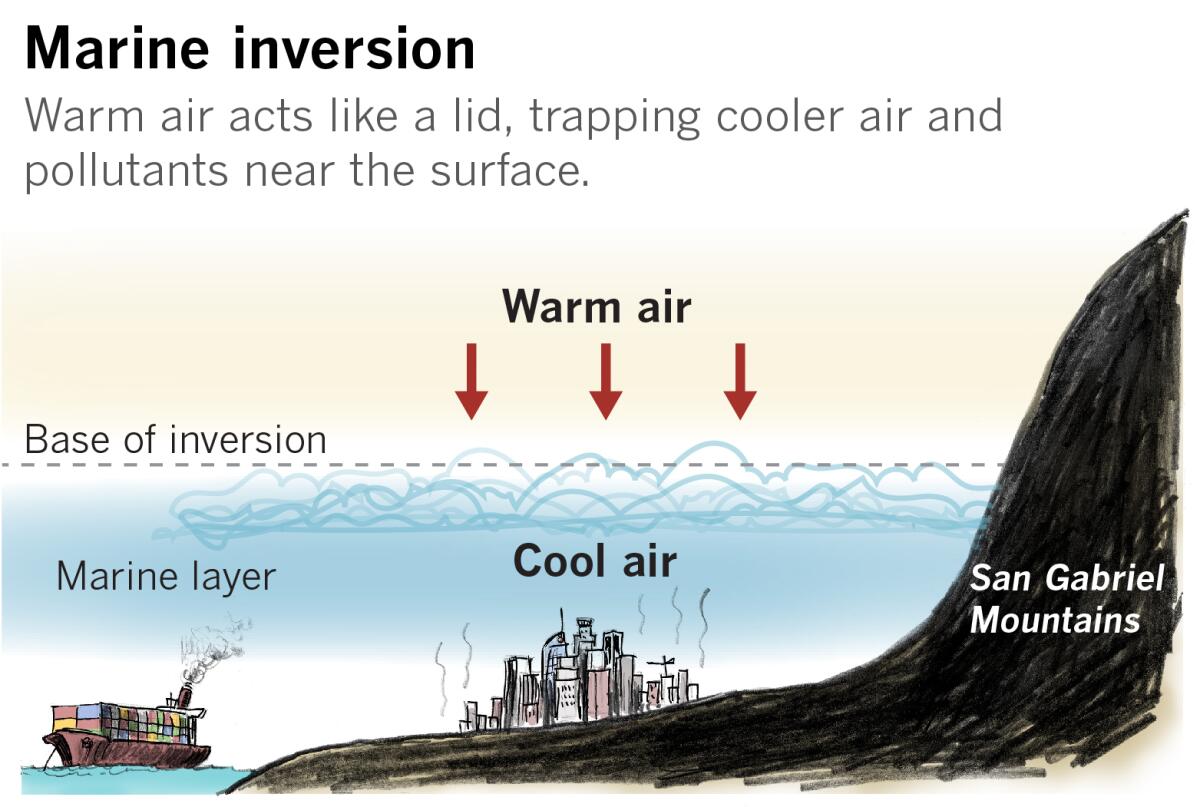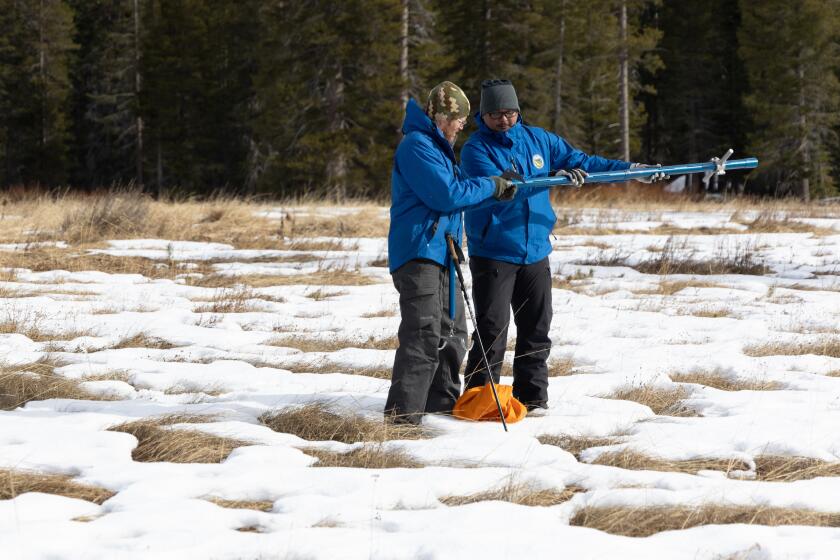Southern California wood-burning ban extended as ‘lid’ locks in hazy, polluted air

- Share via
If you have a fireplace in Southern California, experts are asking you not to use it. A no-burn alert has been extended at least through Wednesday as much of the region sits beneath an atmospheric soup of haze and pollutants.
The alert was issued Monday by the South Coast Air Quality Management District for the non-desert parts of Los Angeles, Orange, Riverside and San Bernardino counties. The alert bans any burning of wood or manufactured fire logs made of wax or paper due to poor air quality in the region.
Current weather conditions are contributing to air quality woes, said one expert.
“Basically, the weather conditions that we’re seeing are light winds and not a lot of vertical mixing in the upper atmosphere, which can lead to high levels of fine particle pollution,” said Scott Epstein, a supervisor with the South Coast AQMD.
From California to New England to Europe, many areas of the Northern Hemisphere are approaching a ‘snow-loss cliff’ due to global warming, researchers say.
Stefanie Sullivan, a meteorologist with the National Weather Service, attributed the poor air quality first and foremost to the “shallow” marine layer causing what is known as temperature inversion: Instead of temperatures decreasing with height, they increase.
“That acts as a lid,” Sullivan said, “so air really doesn’t move up beyond that level, trapping all the haze and pollutants.”

Epstein said the AQMD tracks several pollutants, including ozone and fine particulate matter, also known as PM2.5. The latter type of pollution is highly hazardous to respiratory health, as particles can enter deep into the lungs, causing asthma attacks and other health problems.
Ozone tends to be a bigger issue during the warmer months of March through October due to atmospheric concentrations of the pollutant increasing with heat. Fine particulate matter is a bigger issue during the colder months of November through February; there have been eight no-burn days so far this winter in Southern California.
Epstein said the alerts are issued after certain pollutant concentrations are reached anywhere within the AQMD’s jurisdiction.
If any part of the region crosses the pollutant threshold, a no-burn alert is issued for the entire area. Epstein said this is because emissions, including those created by burning wood, can shift and affect areas with averages below the threshold.
“Poor air quality moves around,” he said.
For Wednesday’s alert, Epstein said two areas were forecast to surpass the threshold: Perris Valley and the Riverside metro area. Other parts of the region are forecast to have conditions near the threshold, including the eastern San Bernardino valley and the Norco-Corona area.
Esptein said the inland parts of the region, especially Riverside and San Bernardino counties, tend to have higher concentrations of PM2.5.
“That’s not necessarily because they have way more emissions,” Epstein said. “They occur west of there and then blow east.”
Fortunately, rain is in the forecast and could help clear out some of the trapped pollution. Back-to-back rainstorms were expected this week, according to the National Weather Service.
Southern California is expected to see to see two storms this week, according to the National Weather Service.
“When you get rainstorms, you also get some wind that can clean things out that way,” Epstein said.
For those who wish to view the Air Quality Index forecast, or for real-time air quality updates, visit AQMD.gov.
More to Read
Sign up for Essential California
The most important California stories and recommendations in your inbox every morning.
You may occasionally receive promotional content from the Los Angeles Times.













